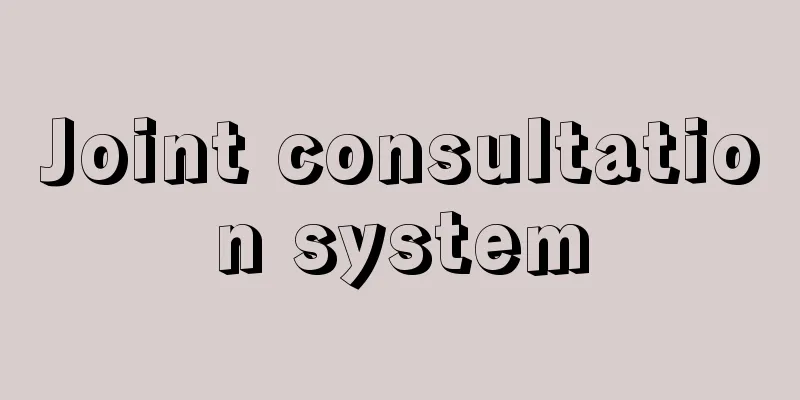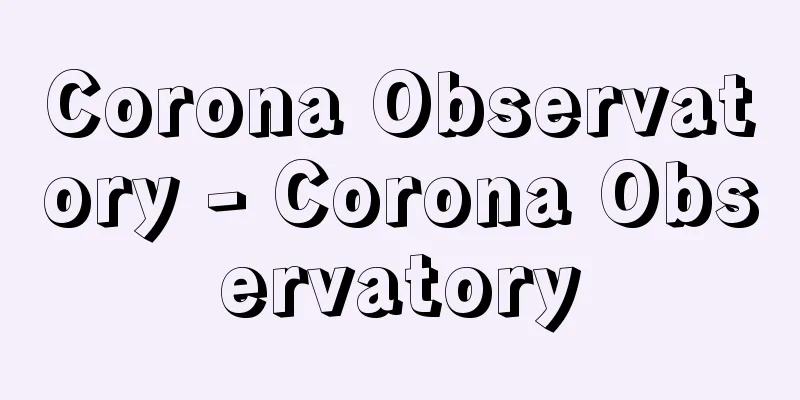Joint consultation system

|
The functions, organization, and operation methods of the labor-management consultation system vary depending on the era and country. A common definition is that workers participate in the decision-making and information transmission process for management and administration through a labor-management consultation mechanism or organization that is distinct from collective bargaining. Matters that were not dealt with in traditional collective bargaining, such as management, production issues, safety and health, welfare, and information provision, are discussed and reported there. Unlike collective bargaining, the labor-management consultation system does not have the right to strike and is conducted within a limited scope of consultation, proposals, and information provision, so its regulatory power is limited. Historically, the labor-management consultation system was introduced by management's initiative to promote reconciliation and cooperation between labor and management and smooth technological innovation in order to restore the economy after World War II. In the labor-management consultation system, management refuses to allow workers and labor unions to participate in the decision-making process for matters related to management rights, but tries to obtain workers' cooperation with management by providing information, etc. In response to this, labor unions have tended to increase their involvement in decision-making at the company and workplace levels, and to seek to participate in and establish leadership in the decision-making process on a variety of issues even within the labor-management consultation system. [Takashi Moriya] foreign countryIn the UK, the introduction of labour-management consultation was recommended by the Whitley Committee during World War I in order to establish a war effort based on labour-management cooperation, and it developed into factory committees. From World War II through the postwar period, it showed a certain degree of expansion as joint committees. With the rise of the shop steward movement, it temporarily declined, but since the 1980s, with the introduction of new technology and increased competitiveness, labour-management councils have expanded into joint labour-management councils. In Germany, the labor-management consultation system was developed in the form of works councils (Betriebsrat) under the Weimar Republic. After World War II, the labor-management consultation system was legalized in the former West Germany with the enactment of the Business Organization Act, making it mandatory for companies with five or more employees to establish works councils. A major change in the labor-management consultation system in Europe since 1990 is the issuance of a Directive on European Works Councils under the integration of the European Union (EU), which has led to efforts to establish legislation for European works councils. This Directive aims to promote the provision of information and consultations through the labor-management consultation system in multinational companies of a certain size or larger under the EU. [Takashi Moriya] JapanThe Japanese labor-management consultation system was first established after the Second World War as a management council, a system close to worker control. Management councils spread against the backdrop of the rising anti-establishment movement immediately after the Second World War. However, with the subsequent shift in the American occupation policy against the backdrop of the deepening Cold War structure, Japan's prewar management class was revived and management rights were established and expanded, and management councils were forced to disband. After the disbandment of management councils, the Japan Productivity Center led the spread of the labor-management consultation system from the 1950s onwards. Then, in the 1960s, with the introduction of technological innovation, the labor-management consultation system was expanded not only to the business establishment level but also to the workplace level and the company level. Since the 1970s, with the drastic change in the business environment, the Japan Productivity Center and others have called for the expansion of the labor-management consultation system for "labor-management integration," but in reality, the labor-management council's function of improving working conditions has further declined, and it has only strengthened its function of management cooperation, and its role is shrinking. [Takashi Moriya] "Modern British Companies and Industrial Relations - Rationalization and Trade Unions" by Takashi Moriya (1997, Tax Accountant Association) " "Trade Union Participation in Management" by Shinichiro Kimoto (1977, Moriyama Shoten) " "Akira Izawa "Challenges to European Workers' Councils - The Establishment and Development of the EU Enterprise-level Labor-Management Consultation System" by Akira Izawa (1996, Japan Institute for Labor Policy and Training) [References] | | | | | | |Source: Shogakukan Encyclopedia Nipponica About Encyclopedia Nipponica Information | Legend |
|
労使協議制は、時代や国によって、機能、組織、運営方法は異なっている。公約数的に定義を行うと、労働者が、団体交渉とは区別される労使間の協議の機構・組織を通して、経営・管理上の意思決定・情報伝達過程に参加することである。そこでは経営、生産問題、安全衛生、福利厚生、情報提供など従来の団体交渉では取り扱われなかった事項が協議・報告される。労使協議制は、団体交渉と異なり、争議権をもたず、協議・提案・情報提供といった限定された範囲内で行われるため、その規制力は限られたものである。歴史的にみると、労使協議制は、第二次世界大戦後の経済復興のため労使双方の融和・協力や技術革新の円滑化を図るために経営側の主導によって導入されている。経営側は、労使協議制において、経営権にかかわる事項の労働者・労働組合の意思決定過程への参加を拒否する反面、情報提供等を通して、労働者の経営側への協力を取り付けようとする。それに対して労働組合は、企業・職場レベルでの諸決定について組合の関与を強めるとともに、労使協議制においても多様な事項の決定過程への参加と主導権の確立を図ろうとする傾向がある。 [守屋貴司] 外国イギリスにおける労使協議制は、第一次世界大戦中、労使協力に基づく戦争遂行体制の確立のためホイットレー委員会によって、労使協議制の導入が勧告され、工場委員会として展開した。そして、第二次世界大戦から戦後にかけては、合同委員会として一定の広がりをみせた。ショップ・スチュワード(職場委員)運動の隆盛とともに、一時、衰えたが、1980年代以降、新技術の導入や競争力の増大のために、労使合同協議会として労使協議会が拡大してきた。 また、ドイツでは、ワイマール共和制下において経営協議会Betriebsratとして労使協議制が展開された。そして、第二次世界大戦後、旧西ドイツにおいて、経営組織法の制定によって労使協議制が法制化され、従業員5人以上の企業に経営協議会の設置が義務づけられることとなった。1990年以降のヨーロッパにおける労使協議制の大きな変化としては、ヨーロッパ連合(EU)統合下、ヨーロッパ労使協議会に関する指令が出され、ヨーロッパ労使協議会の法制の成立が図られてきた点がある。この指令は、EU下の一定の規模以上の多国籍企業において労使協議制度を通して情報提供、協議を促進しようとするものである。 [守屋貴司] 日本日本の労使協議制は、まず第二次世界大戦後、労働者コントロールに近い形で経営協議会として成立した。経営協議会は、第二次世界大戦直後の高揚した反体制運動を背景として広まった。しかし、その後、東西冷戦構造の深まりを背景としたアメリカの占領政策の転換によって、日本の戦前の経営者層の復活や経営権の確立・拡大が進み、経営協議会は解体を余儀なくされていった。経営協議会の解体後、労使協議制は、1950年代以降、日本生産性本部の主導によって普及が図られた。そして、1960年代には、技術革新導入にあたり、労使協議制は、事業所のみならず、職場レベル、企業レベルに拡大していった。1970年代以降、経営環境の激変にともない、日本生産性本部などによって「労使一体化」のための労使協議制の拡充が叫ばれてきたが、実態的に労使協議会の労働条件向上機能がさらに減退し、経営協力機能の強化のみとなり、その役割が縮小しつつある。 [守屋貴司] 『守屋貴司著『現代英国企業と労使関係――合理化と労働組合』(1997・税務経理協会)』▽『木元進一郎著『労働組合の経営参加』(1977・森山書店)』▽『伊澤章著『欧州労使協議会への挑戦――EU企業別労使協議制度の成立と発展』(1996・日本労働研究機構)』 [参照項目] | | | | | | |出典 小学館 日本大百科全書(ニッポニカ)日本大百科全書(ニッポニカ)について 情報 | 凡例 |
<<: Class collaboration, industrial copartnership
>>: Industrial relations - Industrial relations
Recommend
Maurya Dynasty - Maurya
An ancient Indian dynasty (c. 317-c. 180 BC). Thi...
elite tree
... In the elite tree selection and breeding proj...
Hugo Hassinger
1877‐1952 Austrian geographer. Studied under A. Pe...
Atractylon - Atrakchiron
… [Hiroshi Koyama] [Medicinal] In traditional Chi...
Serotypes - Serum groups
A blood type in the broad sense, it is a general t...
Ichibino [Hot Spring] - Ichibino
...Population: 8,221 (1995). The southern part is...
Edo Bathtub
〘Noun〙① A bathtub in an Edo public bath. It is nar...
ealdorman
…Generally, after the High Middle Ages, when feud...
Gong Ji-chin
A Chinese poet and scholar from the late Qing Dyn...
Sand casting
...Needless to say, the former technique came fir...
Marchand, JB
…Egypt and Sudan became the crossroads of the Bri...
Sadaqa (English spelling)
The Arabic word for voluntary charity by Muslims. ...
Reverse stamp - Urahan
〘Noun〙① A kao (signature seal) written on the back...
Alcohol - arukoru (English spelling)
In the narrow sense, it refers to ethanol (ethyl ...
Shozo Motoki
He was from Nagasaki. His pen name was Eikyu and ...









